This collection consists of short (2-5 minute) introductory videos on neuro-ophthalmological condition pathophysiology, diagnosis and treatment modalities by Dr. Andrew Lee.
Andrew G. Lee, MD, Professor of Ophthalmology, Weill Cornell Medicine; Chairman, Department of Ophthalmology, The Methodist Hospital, Houston, TX; Adjunct Professor of Ophthalmology, Baylor College of Medicine; Adjunct Professor of Ophthalmology, University of Iowa Hospitals and Clinics and the University of Buffalo; Clinical Professor of Ophthalmology, Department of Ophthalmology and Visual Sciences, University of Texas Medical Branch at Galveston; UT MD Anderson Cancer Center; and Texas A and M College of Medicine.
NOVEL: https://novel.utah.edu/
TO
Filters: Collection: ehsl_novel_lee
| Title | Description | Subject | ||
|---|---|---|---|---|
| 126 |
 |
Pharmacological Dilated Pupil | Summary I. Pharmacologic dilation of the pupils a. Defined as a large pupil dilated on the order of 10 or 11 millimeters. b. If the other eye is uninvolved, the condition is normal. II. When light is shone on the pharmacologically dilated pupil, the pupil won't do anything a. If the light is shone o... | Pupil; Dilation; Adie; Pilocarpine |
| 127 |
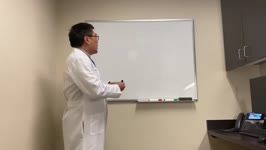 |
Photo Oculodynia | Summary: • Photo-oculodyniais pain precipitated by light o Both photophobia, or fear of light, and photosensitivity are possible contributing pathways • The pathway of light o Eye > retina > ganglion > optic nerve o At the optic nerve, pain and light pathways converge o Mixing of the afferent pa... | Pain; Photophobia; Photosensitivity |
| 128 |
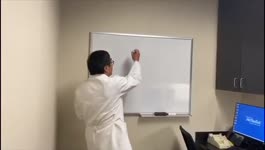 |
Pituitary Apoplexy | Summary: • Pituitary apoplexy o Pathophysiology > Hemorrhage or necrosis of the pituitary gland causes rapid expansion which affects the visual nervous system o Possible Visual Defects > Hits the optic chiasm > Bitemporal hemianopsia > Hits the optic tract > Incongruous homonymous hemianopsia > Ot... | Pituitary Gland; Visual Nervous System |
| 129 |
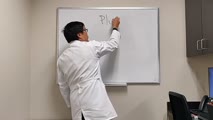 |
Plus Minus Syndrome | Dr. Lee lectures medical students on plus minus syndrome. | Pathology, Signs and Symptoms |
| 130 |
 |
Polyarteritis Nodosa | Dr. Lee lectures medical students on the subject of polyarteritis nodosa. | Polyarteritis Nodosa; Vasculitis |
| 131 |
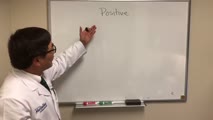 |
Positive Visual Phenomena I: Entopic, Migraine Occipital Seizures | Dr. Lee lectures medical students on positive visual phenomena. | Pathology; Signs and Symptoms; Migraines; Seizures |
| 132 |
 |
Post Operative Vision Loss | Dr. Lee lectures medical students on post-operative vision loss. | Vision Loss; Post Operative; Surgery |
| 133 |
 |
Posterior Internuclear Ophthalmoplegia (INO) of Lutz | Dr. Lee lectures medical students on internuclear ophthalmoplegia (INO), posterior of INO Lutz. | Medical Condition; Internuclear Ophthalmoplegia; Lutz |
| 134 |
 |
Posterior Ischemic Optic Neuropathy (PION) - 2019 | Dr. Lee lectures medical students on posterior ischemic optic neuropathy. | Pathology; Ischemic/Strokes; Neuroanatomy |
| 135 |
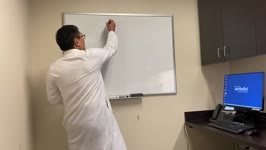 |
Posterior Ischemic Optic Neuropathy (PION) - 2020 | Dr. Lee lectures medical students on posterior ischemic optic neuropathy (PION). | Neuropathy; Posterior; Ophthalmology |
| 136 |
 |
Posterior Reversible Encephalopathy Syndrome (PRES) | Dr. Lee lectures medical students on posterior reversible encephalopathy syndrome. | Pathology; Encephalopathy; Neuroimaging |
| 137 |
 |
Primary CNS Lymphoma | Summary: • Most of the primary CNS lymphoma is diffuse large non-Hodgkin's B cell lymphoma • Primary CNS lymphoma can be anywhere in the central nervous system (brain, peri-ventricular white matter, etc.) o Lots of surrounding peritumoral edema can be seen on MRI • Most patients with primary C... | Lymphoma; Cancer; Central Nervous System |
| 138 |
 |
Progressive Supranuclear Palsy | Summary: ● Progressive supranuclear palsy (PSP) ○ Progressive disorder of the elderly ○ Supranuclear → doll's head maneuver overcomes the ophthalmoplegia ○ Bilateral, symmetric ● Down-gaze palsy is the key feature of PSP ○ Elderly patients - it often becomes more difficult to look up a... | Palsy; Supranuclear; Glasses |
| 139 |
 |
Proptosis in Neuro-Ophthalmology | Dr. Lee lectures medical students on proptosis in neuro-ophthalmology. | Proptosis; Exophthalmometry; Thyroid Eye Disease |
| 140 |
 |
Pseudo Papilledema | Dr. Lee lectures medical students on pseudo-papilledema. | Papilledema Intracranial Pressure; Drusen; Diagnosis |
| 141 |
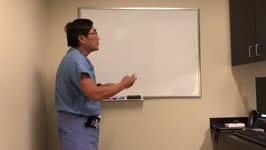 |
Pulseless Disease | Dr. Lee lectures medical students on the subject of pulseless disease | Pulseless Disease; Vasculitis; Giant Cell Arteritis; Takayasu Arteritis |
| 142 |
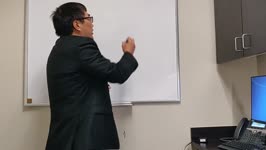 |
Refractive Shift in Neuro-Ophthalmology | Summary: • Refraction o Myopia - light beam focuses in front of the retina o eye is too long o myopic shift - lens thickens o Hyperopia - light beam focuses behind the retina o eye is too short o hyperopic shift - retina pushed forward • Change in lens - Myopic Shift o Diabetes o hyperglycemia d... | Refractive; Lens; Transient; Hyperopia; Myopia |
| 143 |
 |
Retinal Hemifield Slide Phenomenon | Summary: Retinal Hemifield Slide Phenomenon • Problem: Two visual fields slide because the hemifields do not align, causing diplopia • Patient: Non-overlapping visual field defects with remaining field juxtaposition 1. Bitemporal hemianopsia (2/2 pituitary adenoma, for example) 2. Super-altitudi... | Retinal; Chiasmal; Tumor; Hemianopsia |
| 144 |
 |
Retinal Migraine | Dr. Lee lectures a class of medical students on the subject of retinal migraine. | Migraine; Retina; Vasospasm |
| 145 |
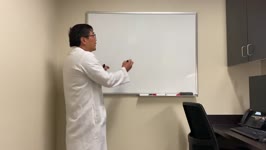 |
Retrograde and Anterograde Optic Atrophy | Summary: • Optic atrophy represents damage to nerve's axon or cell body o Can happen in the anterograde/orthograde or retrograde direction o Ophthalmoscopic finding of optic atrophy is due to Wallerian degeneration of the optic nerve axon o Results in a pale nerve • Causes of optic atrophy o Ant... | Optic Atrophy; Anterograde; Retrograde; Wallerian Degeneration; CRAO; BRAO |
| 146 |
 |
Riddoch Phenomenon | Summary: 1. Riddoch Phenomenona. Stat o kinetic dissociation: you can't see a stationary stimulus (static) but you can see a moving stimulus (a kinetic) b. Visual field testing i. Humphrey 1. Static test where stimulus (dots) are presented in each hemi-field ii. Goldmann 1. Kinetic test where the st... | Kinetic Dissociation; Visual Field Testing |
| 147 |
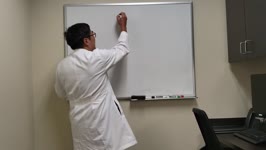 |
Roving Eye Movements | Dr. Lee lectures medical students on the subject of roving eye movements. | Movements; PPRF Vestibulo-ocular |
| 148 |
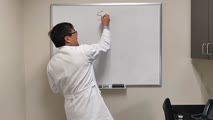 |
Sagging Eye Syndrome | Dr. Lee lectures medical students on sagging eye syndrome. | Neuroanatomy |
| 149 |
 |
Sarcoidosis in Neuro-Ophthalmology | Dr. Lee lectures medical students on sarcoidosis in neuro-ophthalmology. | Sarcoidosis; Neuro-Ophthalmology; Uveitis |
| 150 |
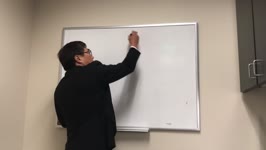 |
Seizures in Neuro-Ophthalmology | Dr. Lee lectures medical students on . | Seizures; Neuro-Ophthalmology; Medical Condition |
